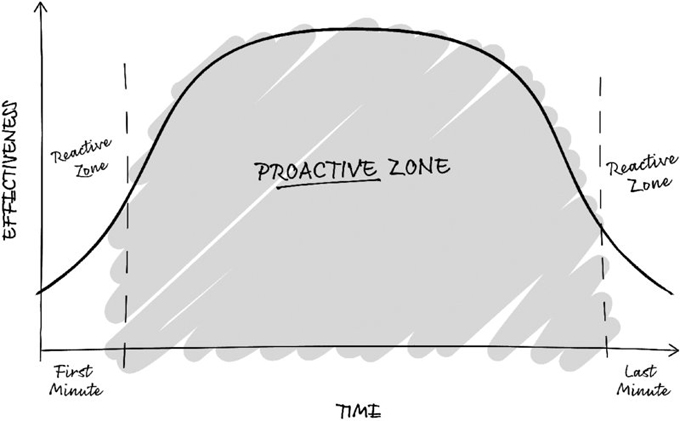2 SCHEDULE IT FORWARD
To maximise productivity and ensure you are getting your work done in a timely way with the least amount of stress, you should try to work in the proactive zone (see figure 2.1).

Figure 2.1: the proactive zone
As much as we want to work proactively, we frequently find ourselves working in two reactive zones. Far too often we end up reacting to incoming work such as emails, or leaving things until the last minute. Working in these reactive zones causes pressure and stress, which leads to mistakes and, arguably, a drop in the quality of our outputs.
Reactive zone 1 — the first minute
If you react to incoming work by doing it straight away, there is a risk that in doing so you drop something more important. Allowing new incoming work to disrupt you will divert your focus from your existing work.
There is no need to do every task the minute it arrives. Most tasks do not have that level of urgency. It is an illusion to think that by doing things the minute they come in, and getting them off your plate, you are working more effectively. I would suggest that the opposite is true: you are fragmenting your work and creating a level of reactivity that is unproductive.
Reactive zone 2 — the last minute
At the same time, leaving things until the last minute is also highly reactive and can also create problems. When you let incoming priorities just sit in your inbox, ...
Get Smart Work now with the O’Reilly learning platform.
O’Reilly members experience books, live events, courses curated by job role, and more from O’Reilly and nearly 200 top publishers.

